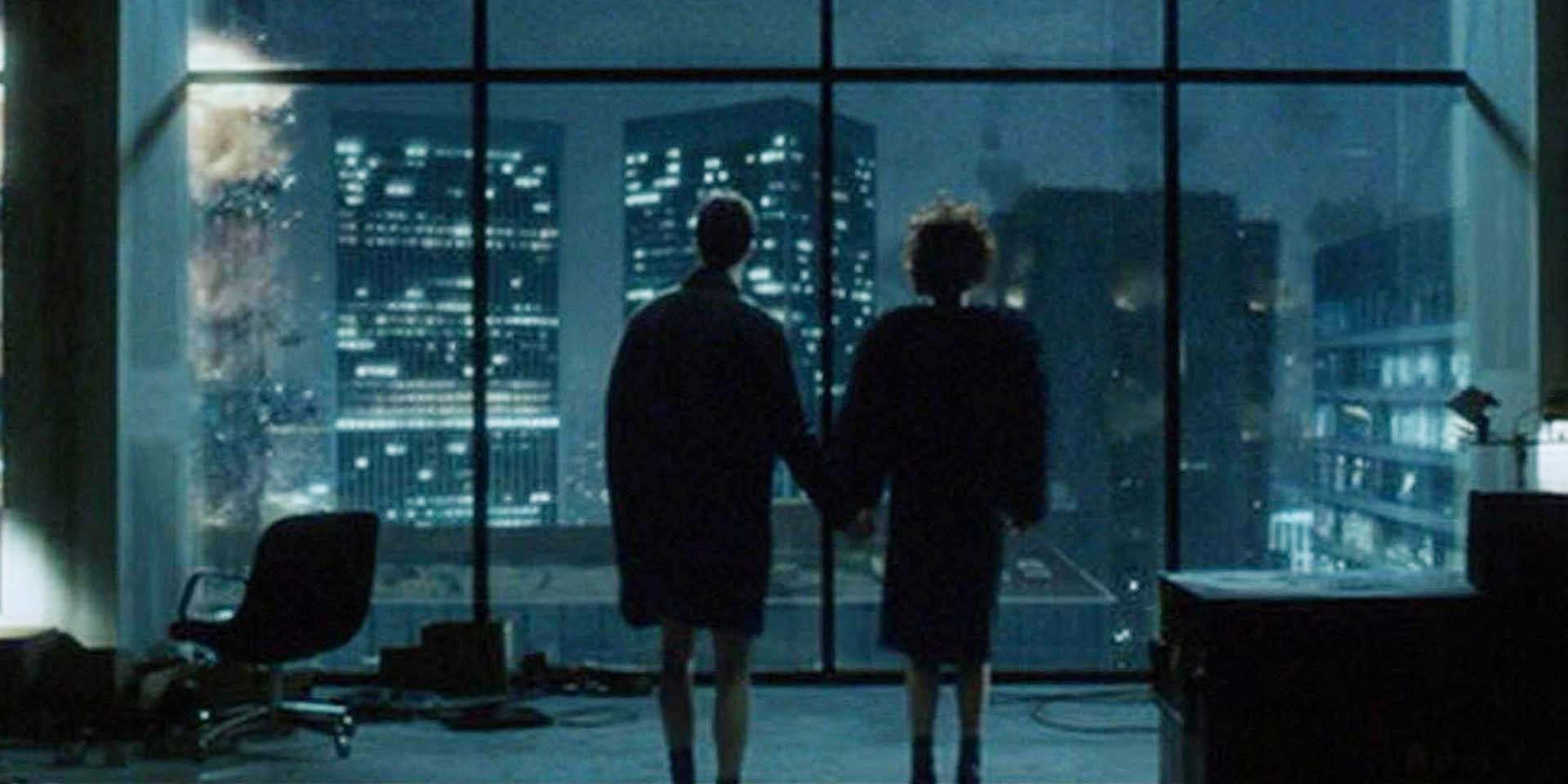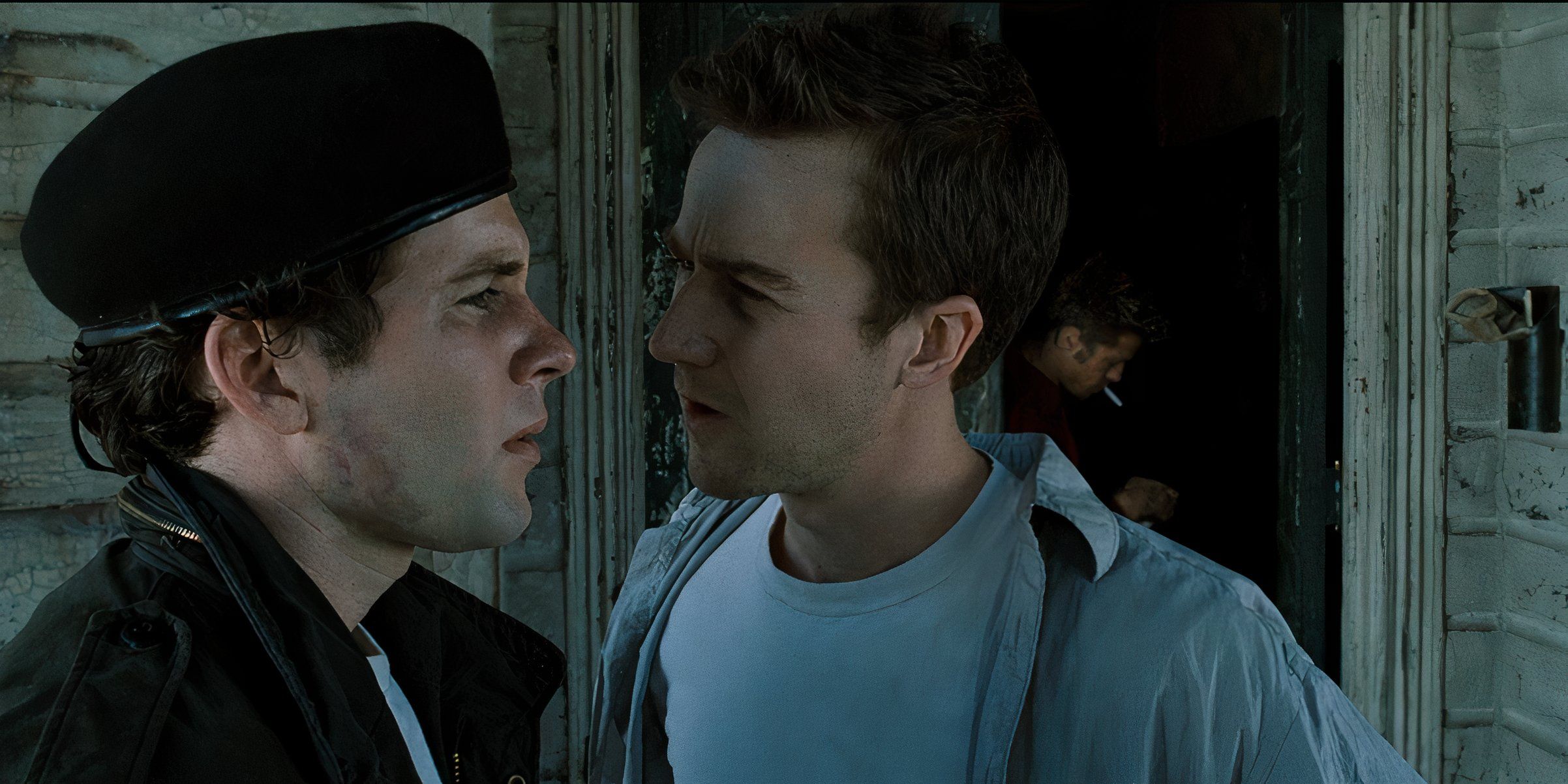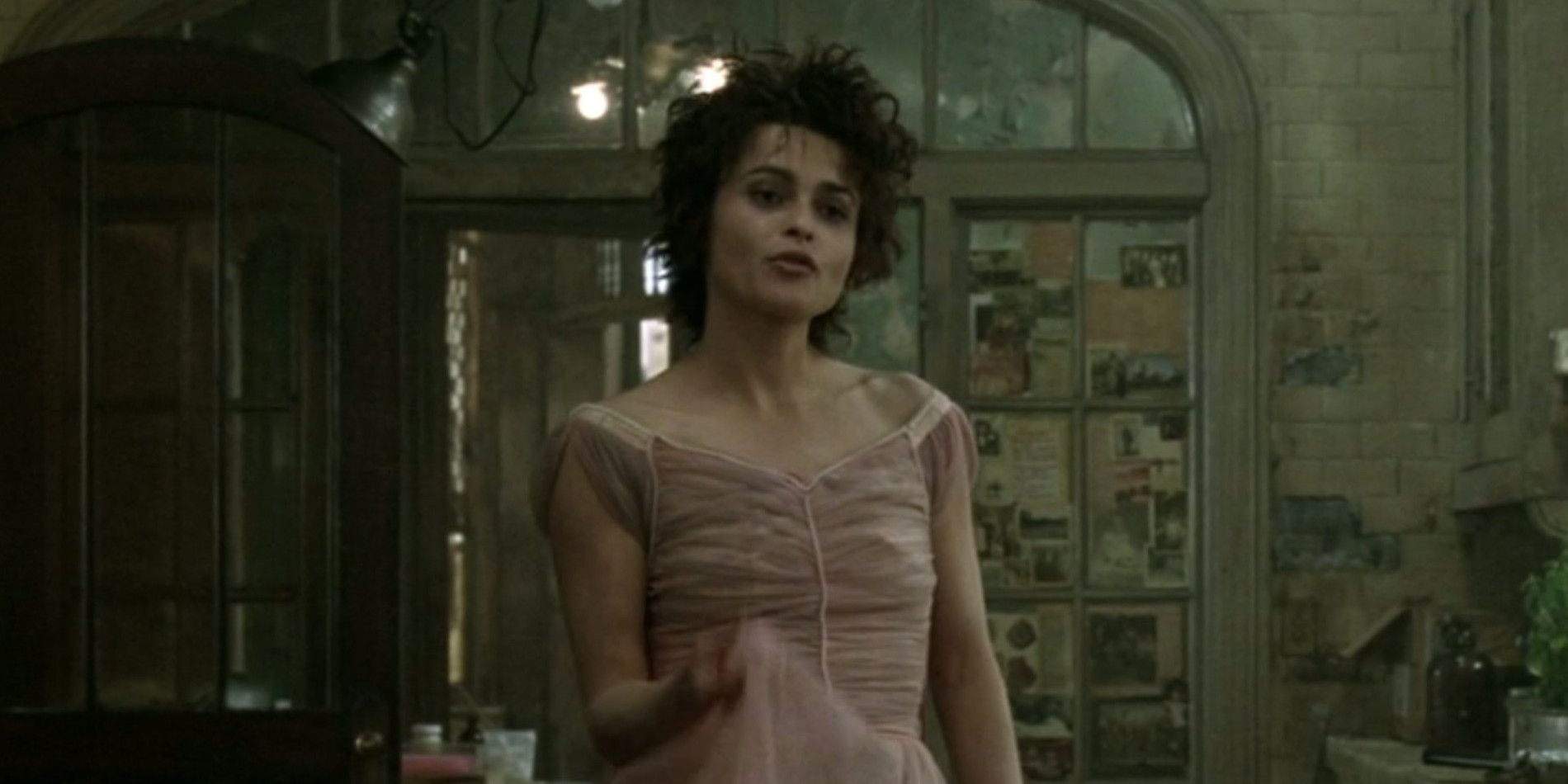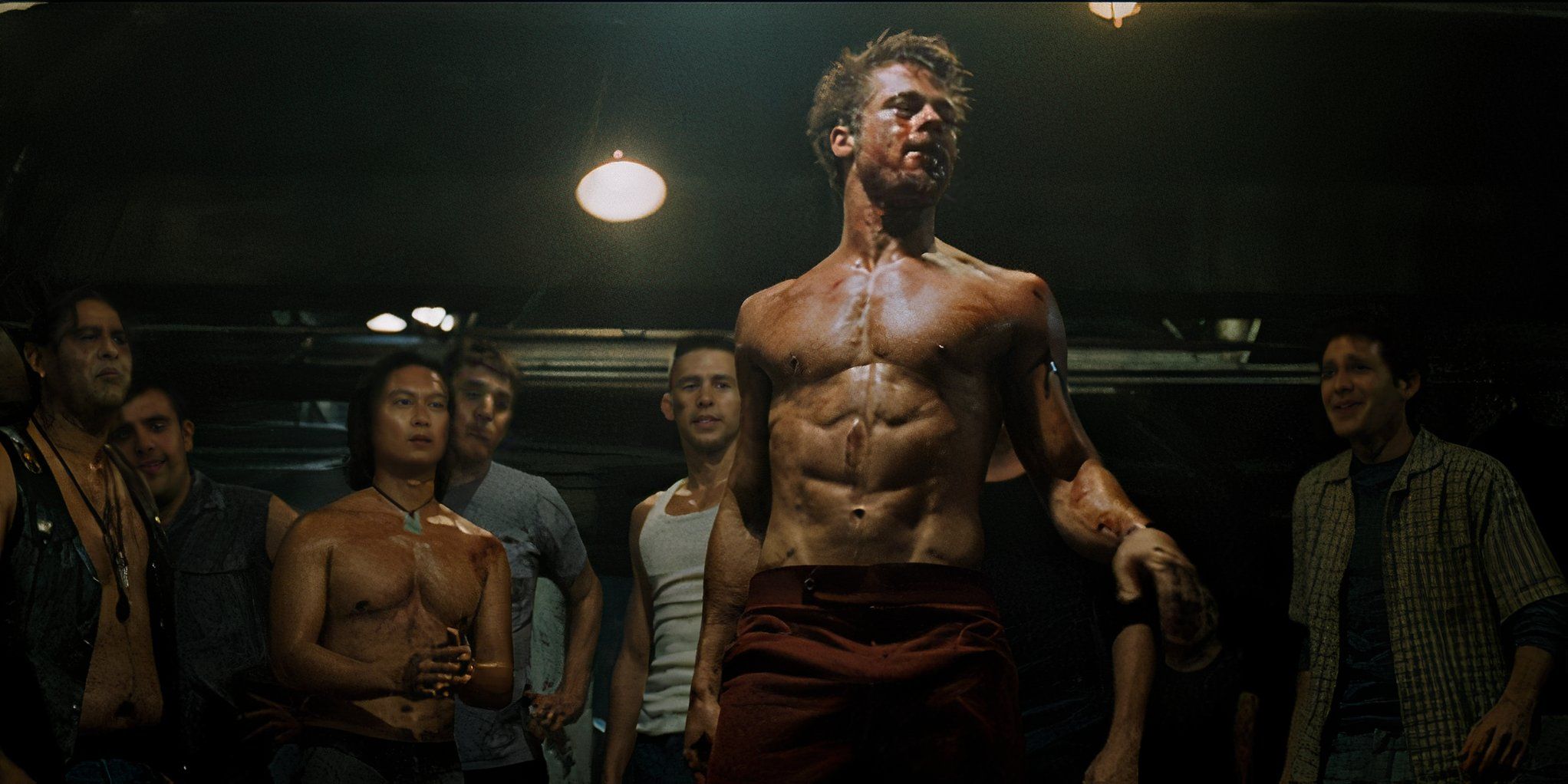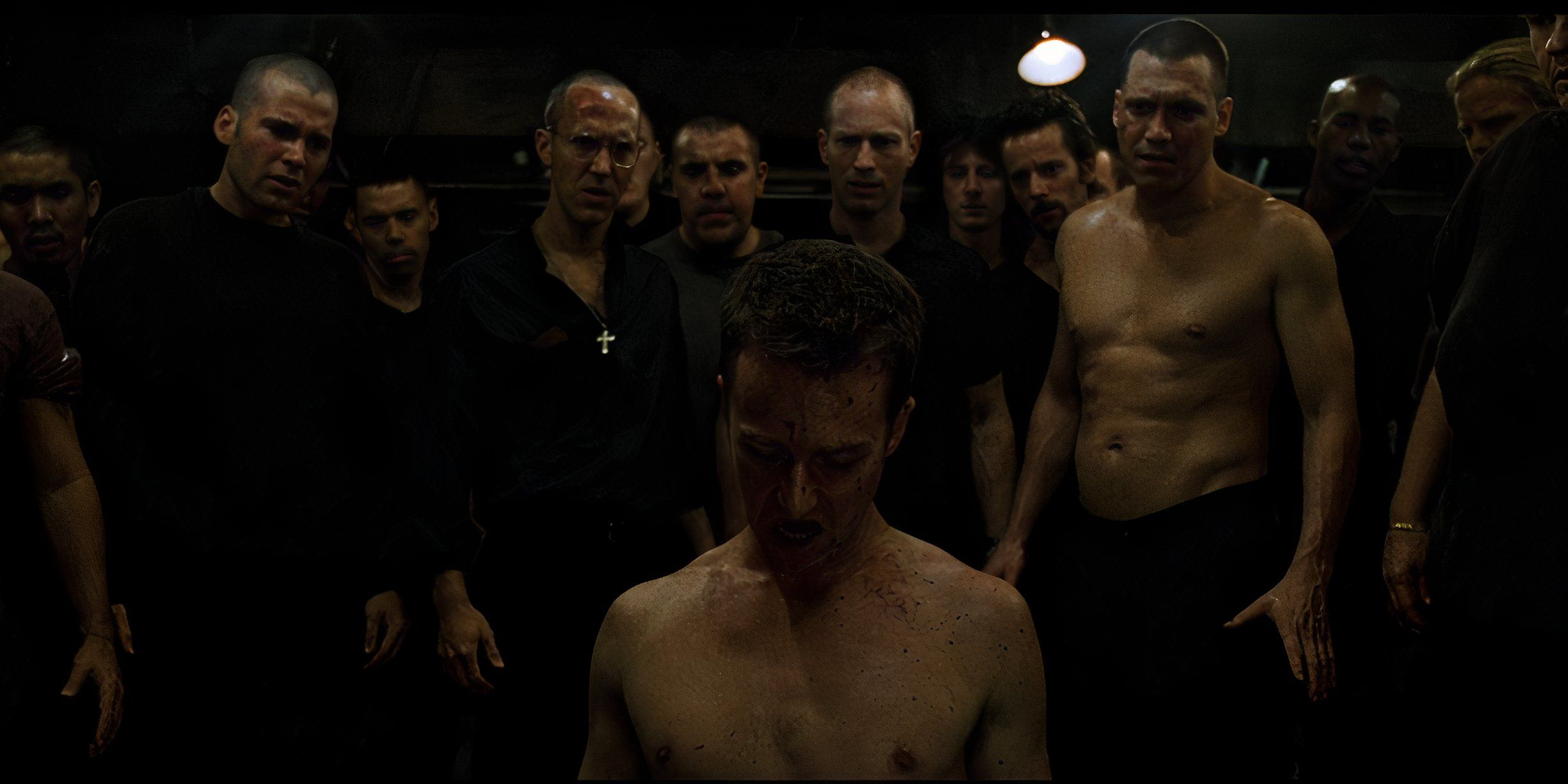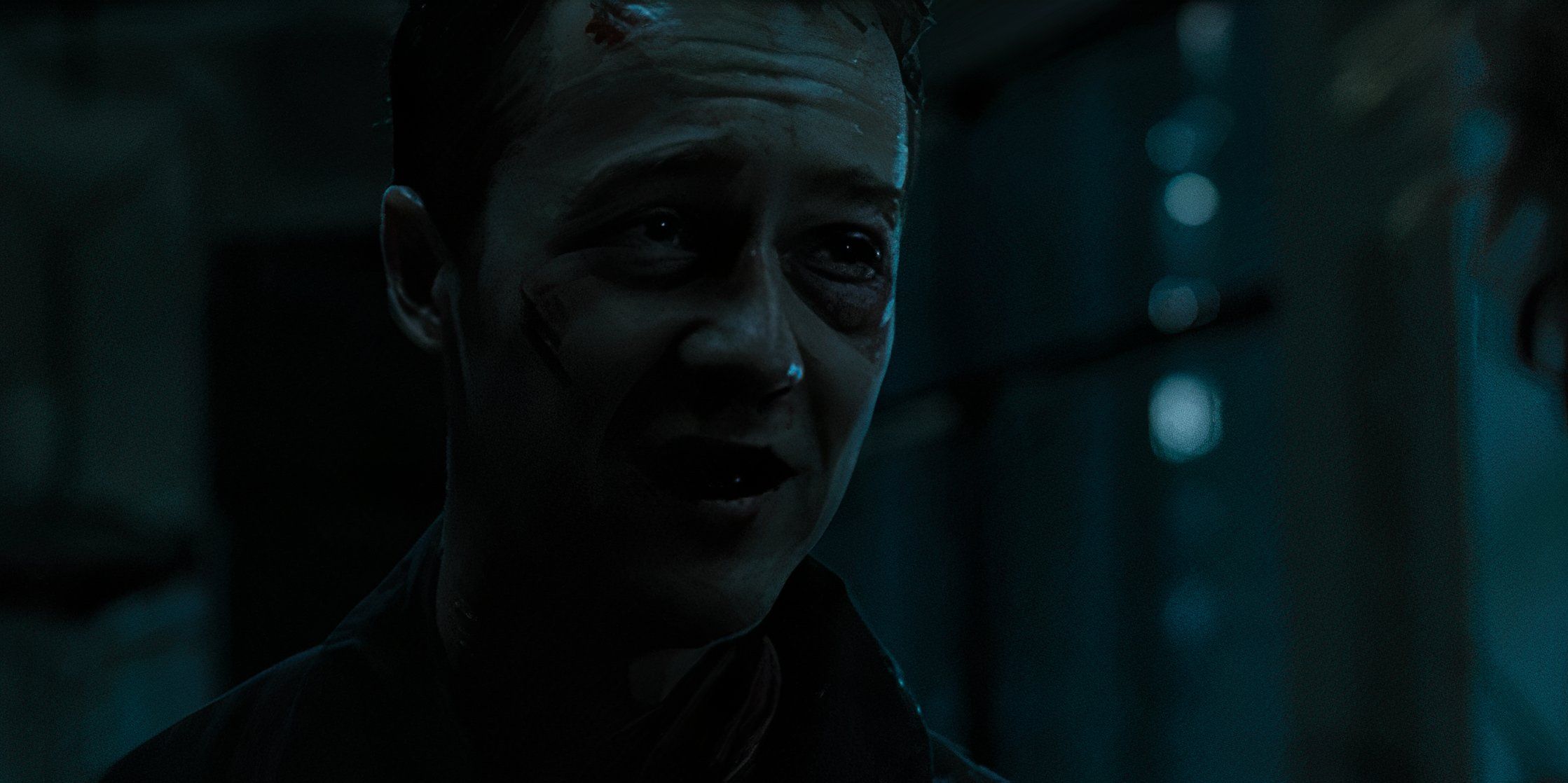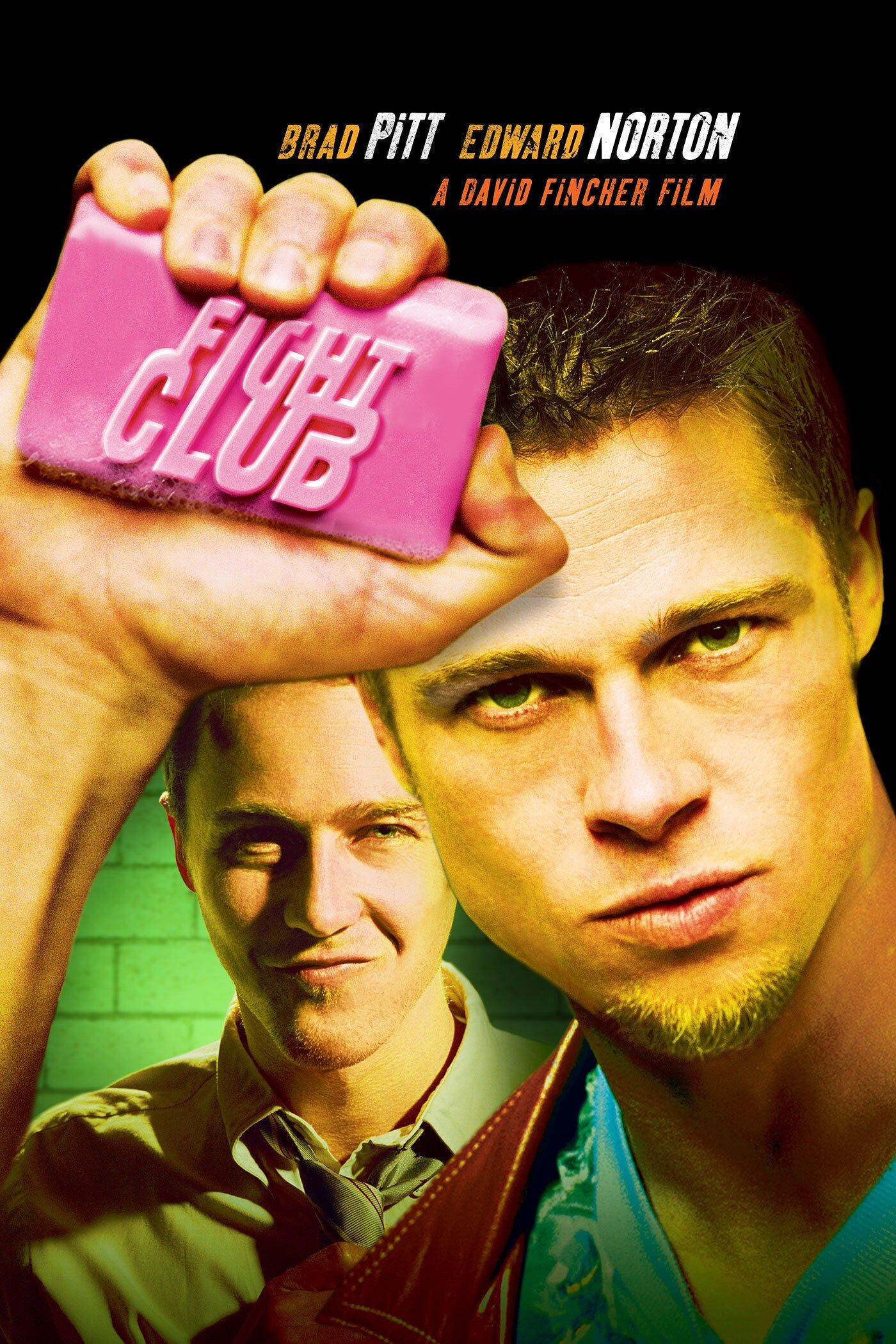David Fincher’s Fight Club has become a defining piece of ’90s cinema and an all-time greatest hit. Yet, Chuck Palahniuk’s original novel offers a distinctly different take on the narrator’s story. While both versions masterfully explore themes of masculinity, consumerism, and identity, they diverge in several significant ways. From altered character dynamics to completely different endings.
The journey from page to screen resulted in numerous creative decisions that reshaped Palahniuk’s work, with the Fight Club creator even revealing some problems he had with the iconic Brad Pitt movie. Some changes were necessary adaptations for the visual medium, despite initial box-office struggles, while others represented more deliberate choices in how to tell this complex story in ways only David Fincher can.
10 How Fight Club’s Narrator Meets Tyler Durden
A Chance Meeting on a Nudist Beach
The first significant divergence between the book and the film occurs when the narrator encounters his alter ego, Tyler Durden. In Palahniuk’s novel, this pivotal meeting takes place on a nude beach, where Tyler is creating art by positioning driftwood to cast a giant shadow at sunset. This ethereal, almost dreamlike introduction sets a different tone for their relationship, emphasizing Tyler’s artistic nature and the surreal quality of their encounter.
.JPG)
Related
Fight Club Soundtrack Guide: Every Song & When They Play
As a former music video director, the music in David Fincher films is always carefully selected and the choices for Fight Club are unique.
Fincher’s film moves this meeting to an airplane, creating a more confined and tension-filled first interaction where the two discuss making soap from human fat. The cramped space of the aircraft and Tyler’s cryptic observations about emergency procedures establish immediate intrigue while foreshadowing the story’s explosive conclusion. This change grounds their initial meeting in the modern corporate world that the story critiques while maintaining the element of chance in their encounter.
9 The Explosive Movie Ending
Fincher’s Improvement Creates an Iconic Moment
Fight Club‘s ending presents perhaps the most striking departure from its source material. In the movie, the Narrator confronts Tyler’s plans by shooting himself in the mouth, causing Tyler to disappear. He then reconciles with Marla, and together, they watch as Project Mayhem’s plan unfolds, resulting in multiple buildings collapsing in a devastating display of anarchic destruction and giving audiences one of the most iconic scenes of the last few decades.
The studio’s first choice to direct
Fight Club
was Peter Jackson, now best known for the
Lord of the Rings
and
Hobbit
movies. However, at the time, he was too busy working on his film
The Frighteners.
Palahniuk’s original novel did not do this. After the Narrator shoots himself, he wakes up in a mental hospital, believing it to be heaven. The ambiguity of this ending leaves readers questioning the reality of what they have just read while suggesting that some institutions continue to shape the Narrator’s perception of reality. This more introspective ending focuses on the Narrator’s mental state rather than the physical destruction of society’s symbols. In this case, one could argue that Fincher’s take on the ending enhanced the overall story and cemented its legacy.
8 Project Mayhem’s Final Goal
Shades of Far Right Ideology
The scope and target of Project Mayhem’s ultimate plan differs significantly between versions. In the novel, the organization’s endgame focuses on a single, symbolic act of destruction: demolishing the Parker-Morris Building to have it crash into a national museum. This targeted approach emphasizes the movement’s intention to destroy cultural institutions and historical artifacts, rather than purely financial targets.
The film broadens the scale of Project Mayhem’s ambitions, targeting multiple credit card company buildings and financial centers. This shift in focus aligns more directly with the film’s critique of consumer culture and debt slavery while providing the more visually impressive climax mentioned previously. The change transforms Project Mayhem’s mission from a symbolic attack on culture to a direct assault on the financial system in a portrayal that some far-right Fight Club fandom groups have taken to support their ideology.
7 The Confrontation with the Boss
A Fight The Narrator Can’t Win
The novel and film take radically different approaches to the Narrator’s workplace rebellion. Palahniuk’s version has the Narrator sending his boss photocopies of Fight Club’s rules and threatening notes, creating a psychological confrontation that plays out through written communication. This approach perhaps emphasizes the passive-aggressive nature of office politics that Palahniuk wanted to highlight in this story, as well as the narrator’s initial reluctance to engage in direct conflict.
The scene of destruction of a different kind, in that it is self-destructive, became equally iconic as a messed-up form of empowerment that shocked audiences.
However, Fincher’s adaptation transforms this into one of the film’s most memorable scenes, where the Narrator brutally beats himself up in his boss’s office. This physical manifestation of internal conflict provides a visceral demonstration of the Narrator’s deteriorating mental state while serving as a stark critique of corporate power dynamics. The scene of destruction of a different kind, in that it is self-destructive, became equally iconic as a messed-up form of empowerment that shocked audiences. Another example of Fincher arguably taking the source material and improving it.
6 Marla Singer’s Role in the Climax
Connection Over Redemption
In the novel, Marla’s final role takes an unexpected turn when she and the support group members save the Narrator from the roof of the Parker-Morris Building. This intervention by characters from the story’s beginning creates a circular narrative structure, suggesting that the very community the Narrator initially exploited becomes his salvation. Their return adds a layer of redemption to the story’s conclusion.
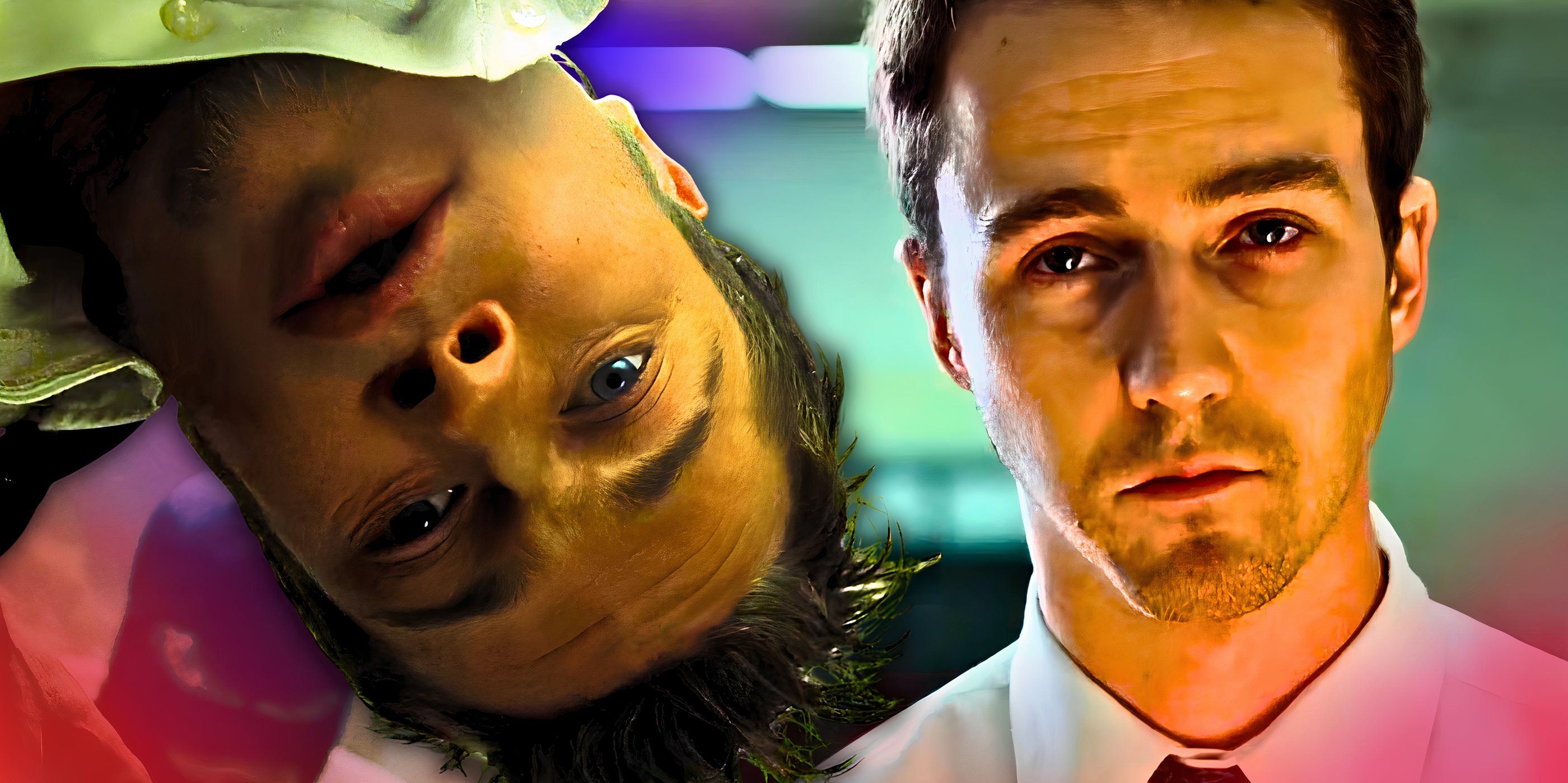
Related
Fight Club Cast & Character Guide
Directed by David Fincher, Fight Club is one of the most emblematic movies of the 90s, delivering a brutal social commentary on toxic masculinity.
The film re-positions a fantastic performance from Helena Bonham Carter in the role of Marla, who she almost didn’t play. After the Narrator shoots himself and Tyler vanishes, he and Marla share a moment of reconciliation as they witness the destruction of the credit card buildings. This change creates a more romantic conclusion, suggesting that authentic human connection might be the answer to the alienation that spawned Tyler Durden in the first place.
5 The Visualization of Tyler Durden
Brad’s Perfect Abs
Tyler Durden’s physical manifestation undergoes significant changes in adaptation. Palahniuk’s novel describes Tyler as notably blond, with his hair “brighter than even the sun is yellow,” and physically smaller than the Narrator. These specific details contribute to Tyler’s almost angelic or mythical quality in the book, setting him apart from the Narrator’s more mundane presence.
Brad Pitt’s famous portrayal in the film presents a markedly different Tyler, with darker hair and a physically imposing presence that overshadows Edward Norton’s Narrator. In one famous scene, Pitt appears with his shirt off, revealing his iconic six-pack, in a moment that juxtaposes his hypermasculine, idyllic form with Norton’s far more average build. This visual contrast helps establish Tyler as the embodiment of everything the Narrator wishes he could be – mentally and physically. The film’s Tyler becomes a more overtly masculine ideal, reinforcing themes about masculinity in crisis.
4 The Origin of the Fight Club
I Want You To Hit Me
The moment of Fight Club’s inception, before the 8 rules are established, reveals subtle but meaningful differences between versions. The book presents the first fight as a spontaneous moment in a parking lot, with Tyler simply hitting the Narrator and asking him to hit back. This organic emergence of violence suggests a more instinctual response to modern male alienation.
The film maintains the parking lot setting and the two lead characters fighting but adds Tyler’s now-iconic line: “I want you to hit me as hard as you can.” This deliberate addition transforms the moment from a spontaneous occurrence into a more purposeful challenge to societal norms. The specific dialogue elevates the scene into a memorable manifesto about male aggression and the desire for an authentic experience while also giving the audience subtle hints about the internal dialogue that carries the story’s central conflict (when you know the ending).
3 The Mechanic Scene
A Evolutionary Moment
One of the most notable divergences comes in the handling of the mechanic confrontation. In the book, the entire interaction exists purely in the Narrator’s imagination, never moving beyond fantasy. This approach emphasizes the Narrator’s initial inability to actualize his violent impulses, highlighting his reliance on Tyler to express his repressed aggression.
The film transforms this imagined confrontation into a physical reality, staging an actual fight between Fight Club‘s unnamed Narrator and the mechanic. This change charts the Narrator’s evolution from passive observer to active participant in his own story, while also providing another visceral display of the violence that increasingly defines his world.
2 The Structure of Tyler’s Appearances
He was Tyler All Along
The book and film handle Tyler’s presence throughout the narrative in distinctly different ways. Palahniuk’s novel presents Tyler’s appearances more sporadically, often tying them to specific locations and events. This approach creates a more fragmented narrative that mirrors the Narrator’s fractured psyche, with Tyler weaving in and out of the story like a ghost.
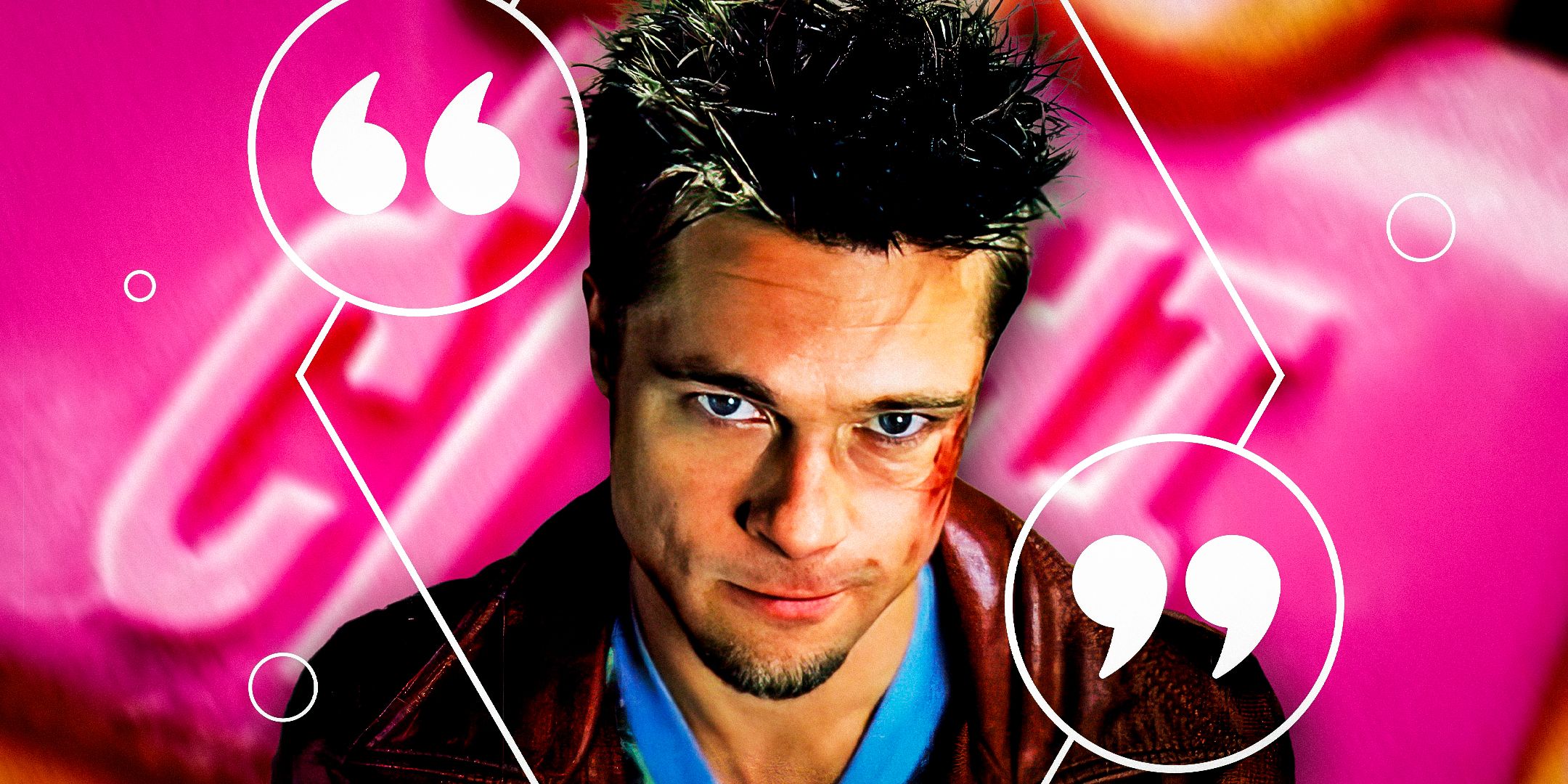
Related
Tyler Durden’s 10 Best Fight Club Quotes
Brad Pitt’s portrayal of Tyler Durden was among the most impressive in his career and was filled with memorable and iconic Fight Club quotes.
Fincher’s adaptation maintains a more constant presence for Tyler once he’s introduced, having him appear across various scenes and settings with the only change that feels odd being when he returns with a shaved head. This change creates a more fluid narrative progression while also making Tyler’s influence on the Narrator feel more pervasive and oppressive. The movie’s structure suggests a more complete integration of Tyler into the Narrator’s daily life, making their escalating conflict and eventual separation far more dramatic.
1 The Narrator’s Fate After the Ending
Palahniuk’s Depressing Follow Up
The book and film diverge significantly in portraying the Narrator’s ultimate fate. Palahniuk’s novel continues beyond the climactic moment of self-discovery, following the Narrator into a mental institution where he receives letters from Project Mayhem members and believes he’s in heaven. This extended denouement provides a more complex examination of the consequences of his actions, suggesting that institutional control remains even after his apparent breakthrough. Furthermore, with work extending beyond the initial book, Palahniuk explored the fate of Marla and the Narrator’s future in more detail.
Nonetheless, the film opts to end with the Narrator standing beside Marla, watching the destruction unfold after Tyler’s disappearance. This more immediate conclusion focuses on the symbolic moment of liberation and potential romance, leaving the Narrator’s long-term fate ambiguous. By avoiding the mental institution epilogue, Fight Club maintains the impact of its climactic moment while suggesting the possibility of a fresh start.



